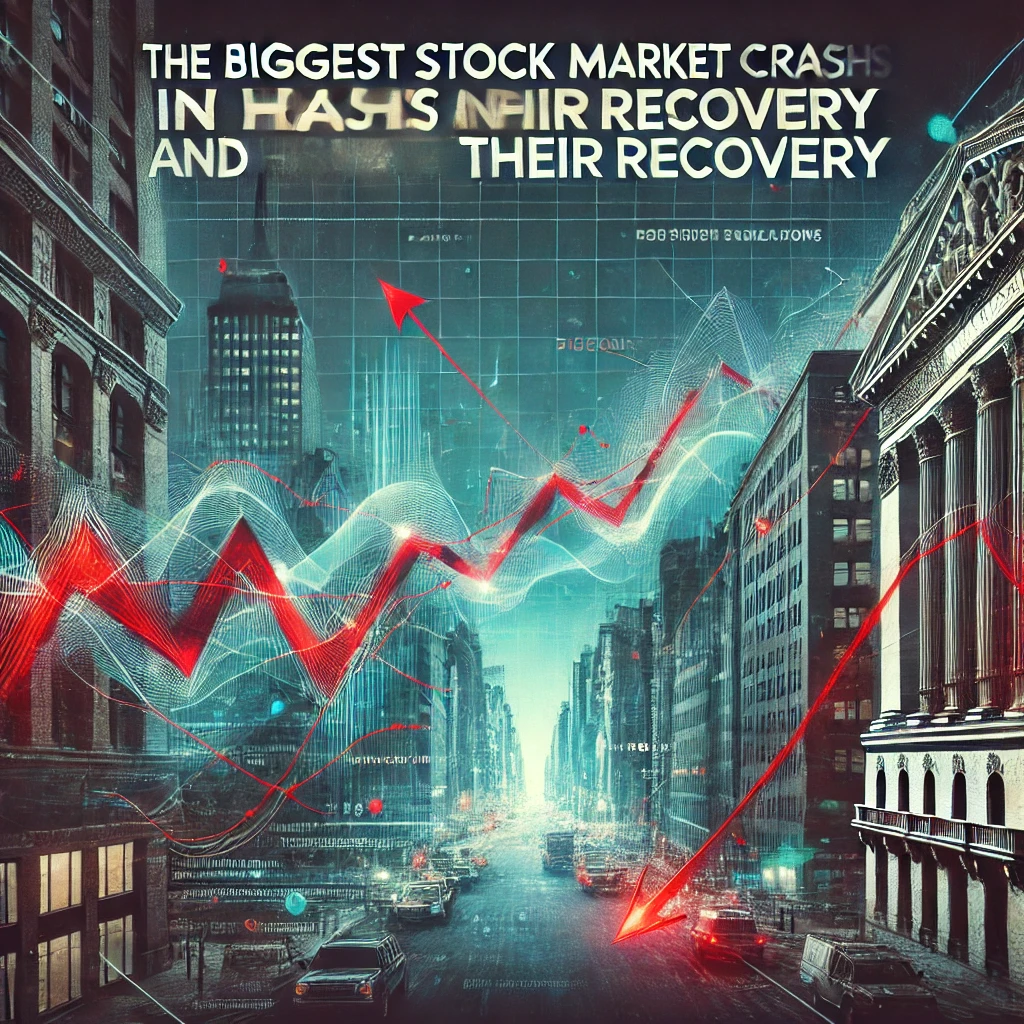Stock market crashes are dramatic and painful events that shake investors and impact economies worldwide. History has witnessed several significant crashes, each with its unique causes and lasting effects. Despite these downturns, markets have demonstrated resilience, reminding us of the importance of preparation, patience, and perspective.
𝟭𝟵𝟮𝟵 – 𝗧𝗵𝗲 𝗚𝗿𝗲𝗮𝘁 𝗗𝗲𝗽𝗿𝗲𝘀𝘀𝗶𝗼𝗻
The Great Depression began with the stock market crash of October 1929, which wiped out nearly 90% of the stock market’s value. This crash marked the start of a decade-long economic downturn, leaving millions unemployed and reshaping economic policies worldwide. What started as a bubble of speculative investments in the roaring ’20s burst in a way no one expected, leading to widespread bank failures, deflation, and a dramatic fall in consumer spending. The 1929 crash remains one of the most severe financial crises in history, highlighting the dangers of unchecked speculation and lack of regulation.
𝟭𝟵𝟴𝟳 – 𝗕𝗹𝗮𝗰𝗸 𝗠𝗼𝗻𝗱𝗮𝘆
On October 19, 1987, known as “Black Monday,” the stock market suffered a historic one-day loss of 22%. It was the largest single-day drop in history, affecting markets worldwide. The cause remains debated, but a mix of program trading, economic uncertainty, and investor panic fueled the crash. Fortunately, the recovery was swift, and within two years, markets had rebounded. This crash underscored the vulnerability of global markets to rapid, technology-driven trading and the importance of investor confidence.
𝟮𝟬𝟬𝟬 – 𝗗𝗼𝘁-𝗖𝗼𝗺 𝗕𝘂𝗯𝗯𝗹𝗲
In the late 1990s, investors poured money into tech companies, convinced that the internet would create limitless growth. However, many of these companies were overvalued with no profitable business model. By 2000, the “dot-com bubble” burst, leading to a 76% decline in the Nasdaq index. The crash was severe for tech stocks and had ripple effects across the economy, causing layoffs and bankruptcies. This era serves as a warning about the perils of overvaluation and the need for due diligence in emerging industries.
𝟮𝟬𝟬𝟴 – 𝗚𝗹𝗼𝗯𝗮𝗹 𝗙𝗶𝗻𝗮𝗻𝗰𝗶𝗮𝗹 𝗖𝗿𝗶𝘀𝗶𝘀
The 2008 Global Financial Crisis (GFC) was triggered by the collapse of Lehman Brothers, one of the largest investment banks in the U.S. Risky subprime mortgage lending and complex financial products led to a credit bubble, which burst with devastating consequences. Over 50% of the stock market’s value evaporated as global economies entered a deep recession. Governments around the world implemented massive bailouts and regulatory reforms to stabilize the economy and prevent future crises, highlighting the importance of transparency and caution in financial practices.
𝟮𝟬𝟮𝟬 – 𝗖𝗢𝗩𝗜𝗗-𝟭𝟵 𝗖𝗿𝗮𝘀𝗵
In early 2020, as COVID-19 spread rapidly across the globe, stock markets reacted with panic, resulting in a 34% drop within just over a month. Lockdowns, business closures, and travel bans created unprecedented economic uncertainty. Central banks and governments responded with historic stimulus measures, helping the market recover swiftly, yet the crash underscored the vulnerability of global economies to unforeseen events. This event illustrated the importance of flexibility, adaptability, and contingency planning.
𝗖𝗼𝗻𝗰𝗹𝘂𝘀𝗶𝗼𝗻: 𝗠𝗮𝗿𝗸𝗲𝘁 𝗥𝗲𝗰𝗼𝘃𝗲𝗿𝘆 𝗮𝗻𝗱 𝗥𝗲𝘀𝗶𝗹𝗶𝗲𝗻𝗰𝗲
Each of these crashes reveals valuable lessons about the stock market’s dynamics. Despite the heavy losses, markets have consistently demonstrated resilience and capacity for recovery. While crashes can be difficult to endure, history shows that preparation, diversification, and a long-term outlook can help investors weather financial storms and benefit from eventual recoveries.
Remember: Market crashes, while unsettling, are a natural part of economic cycles. Staying informed, managing risks, and having a strategy can make a significant difference in navigating such times.
